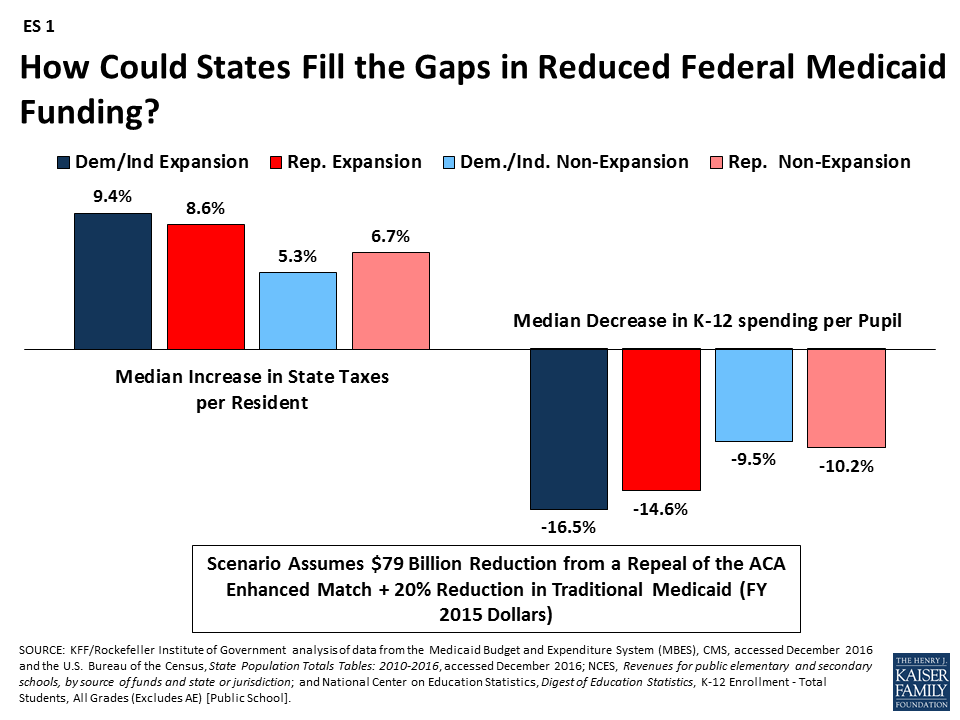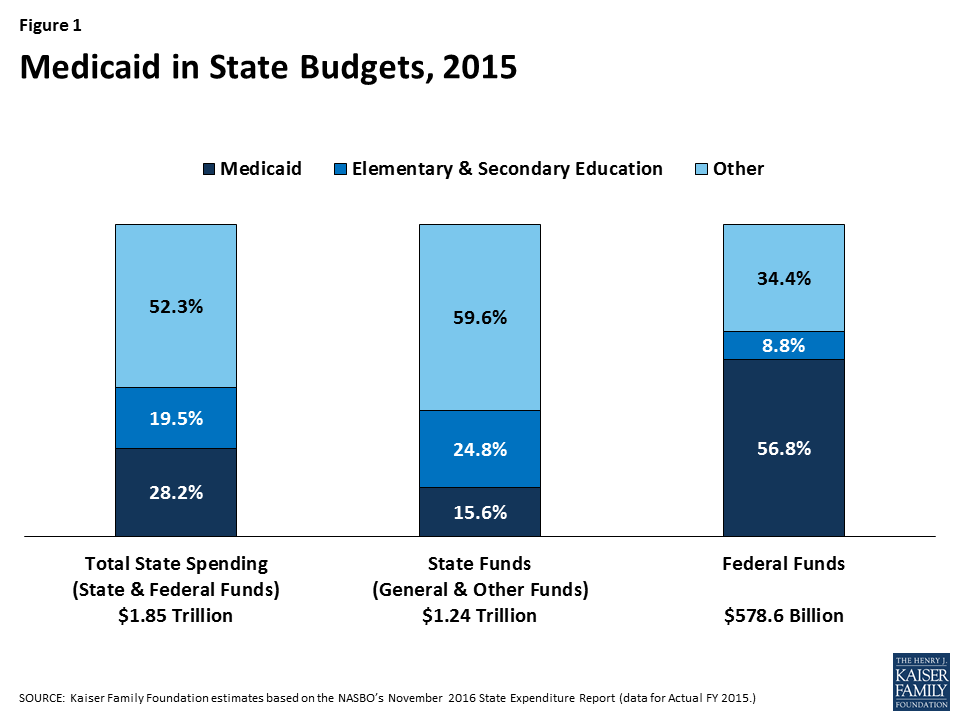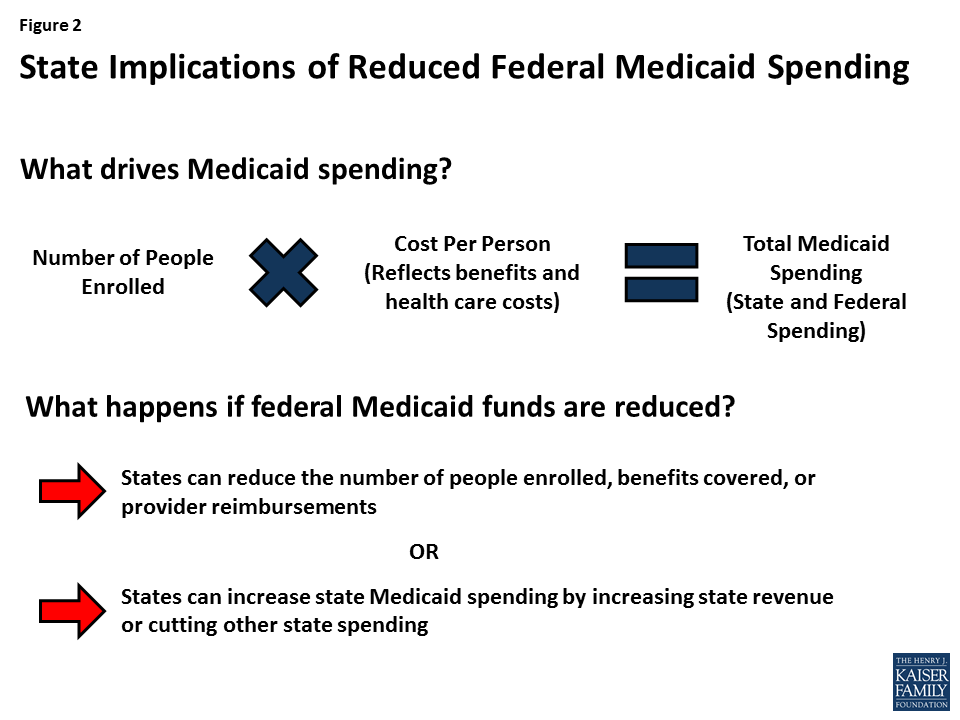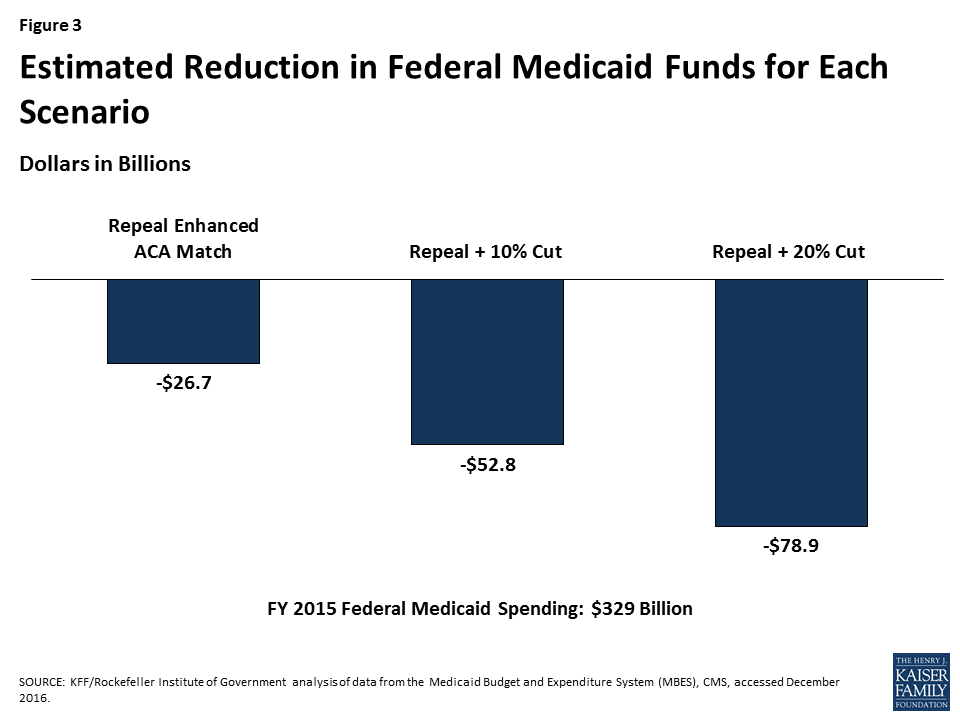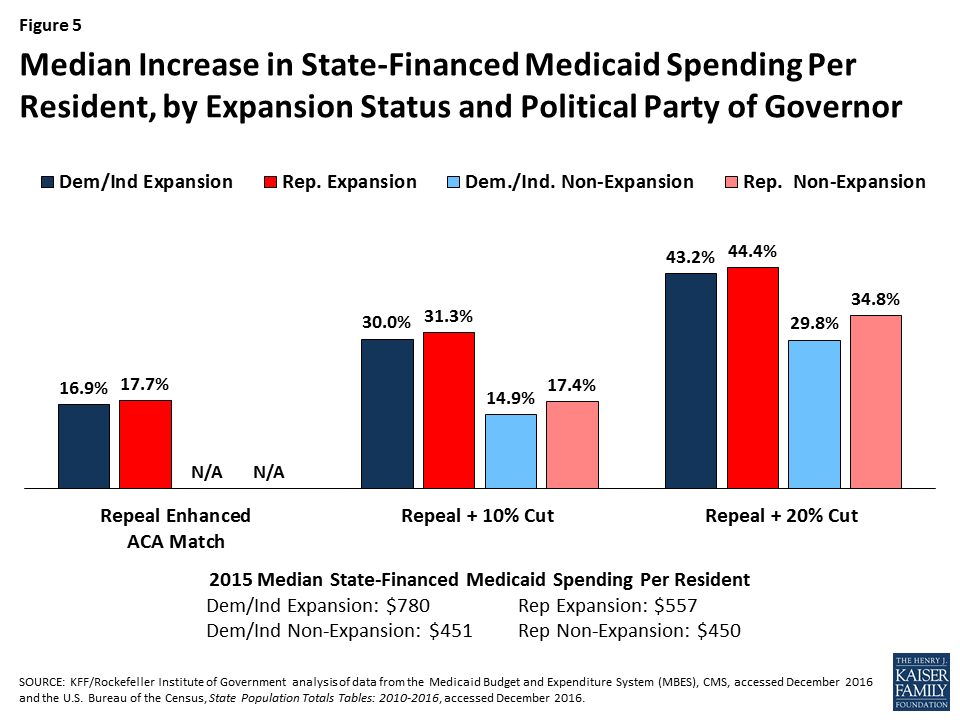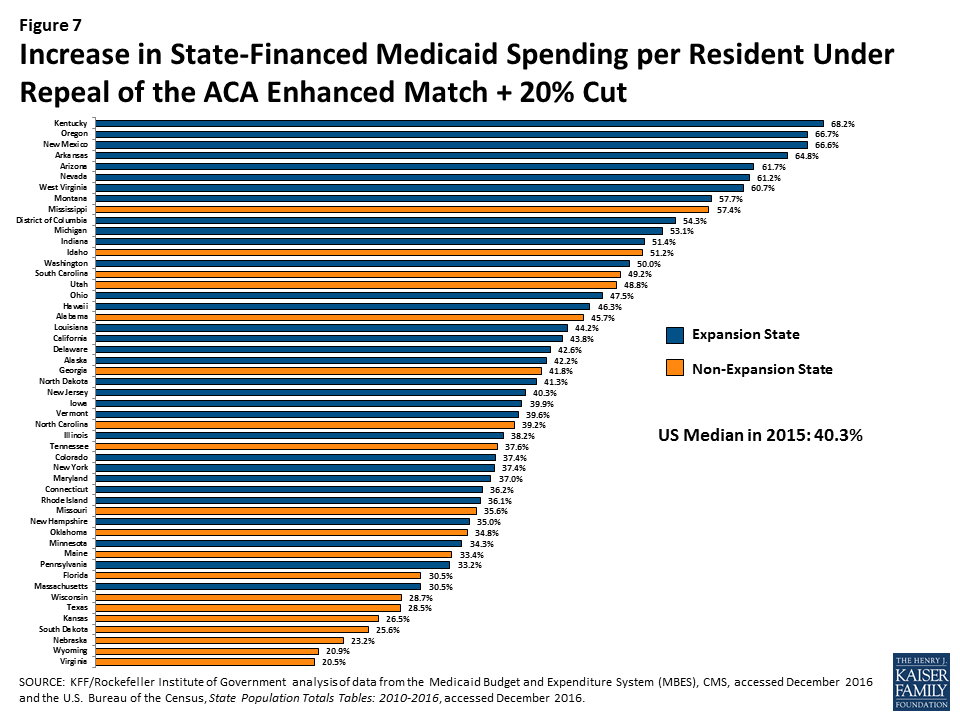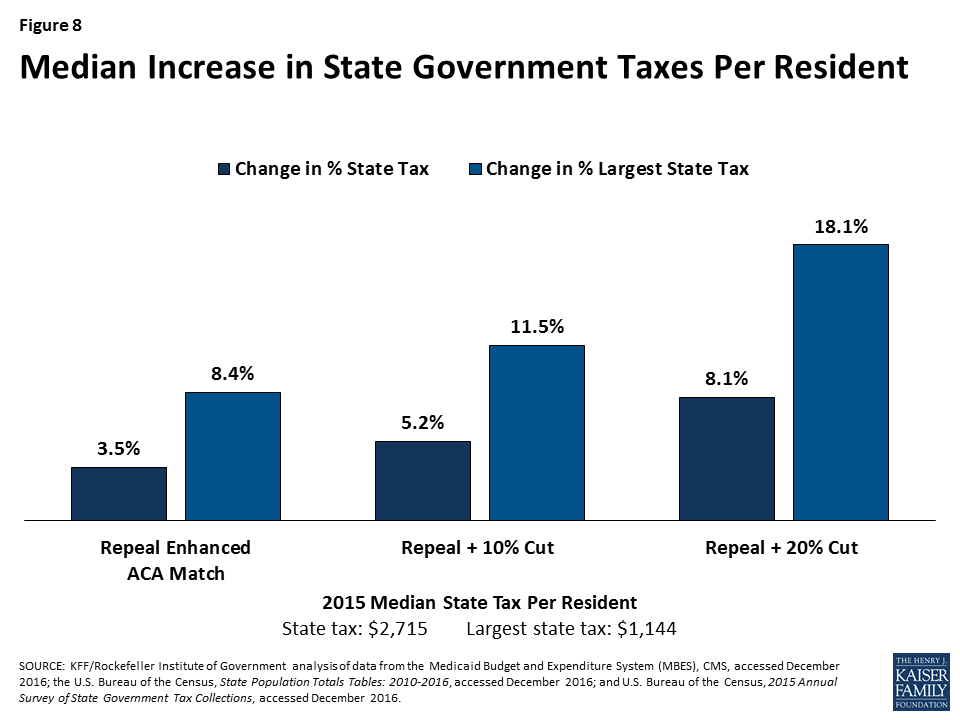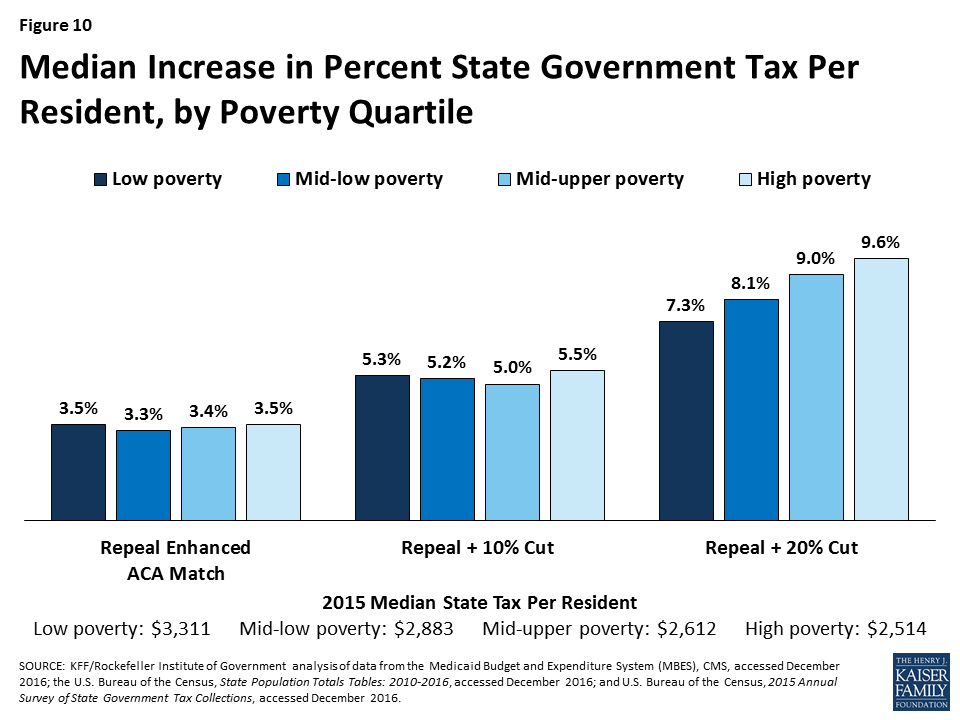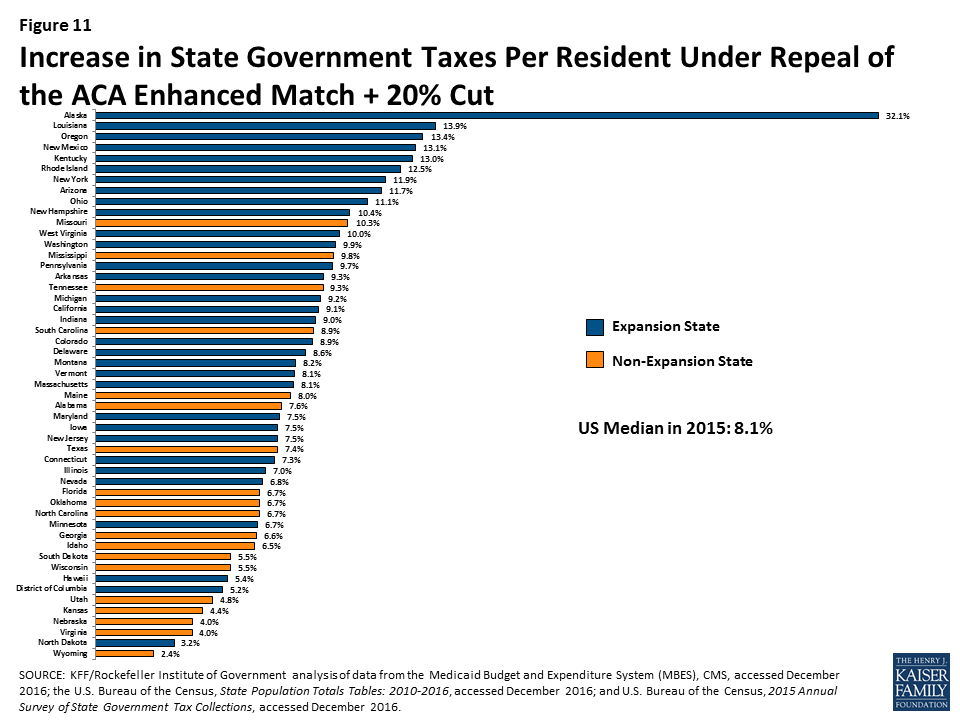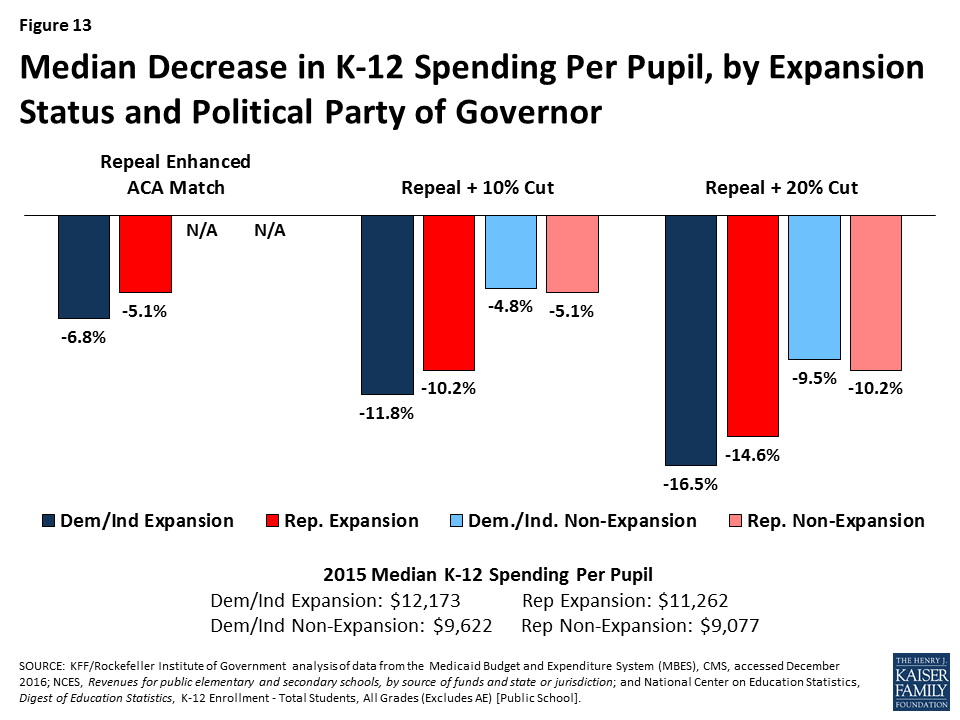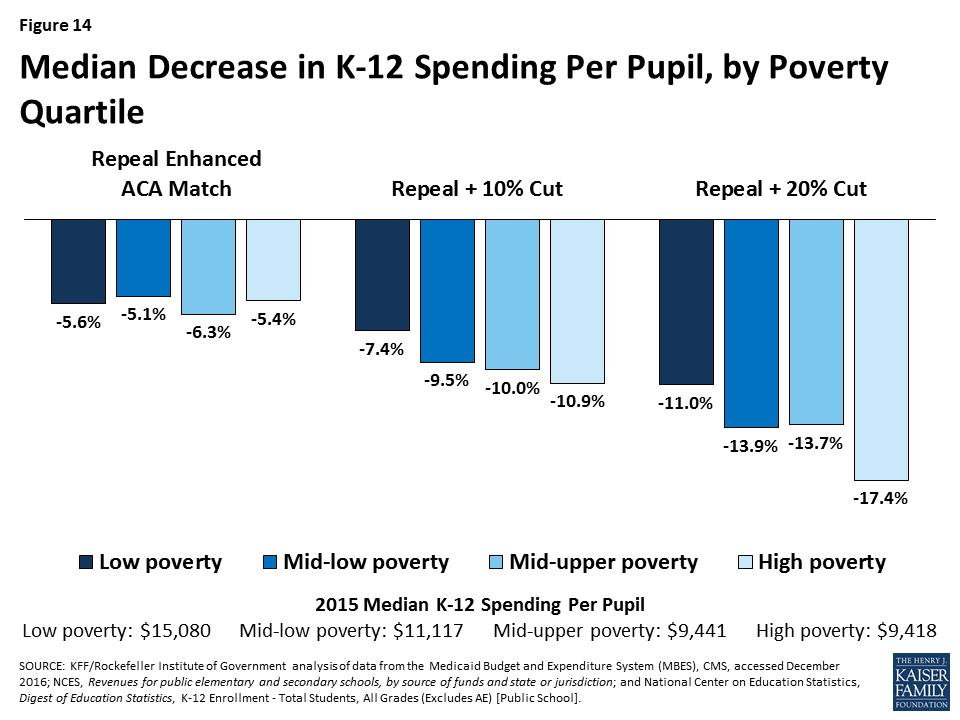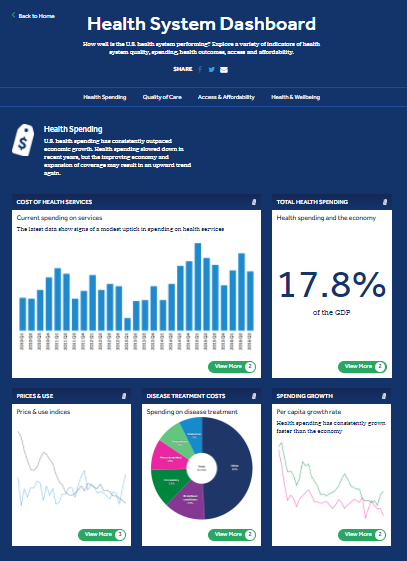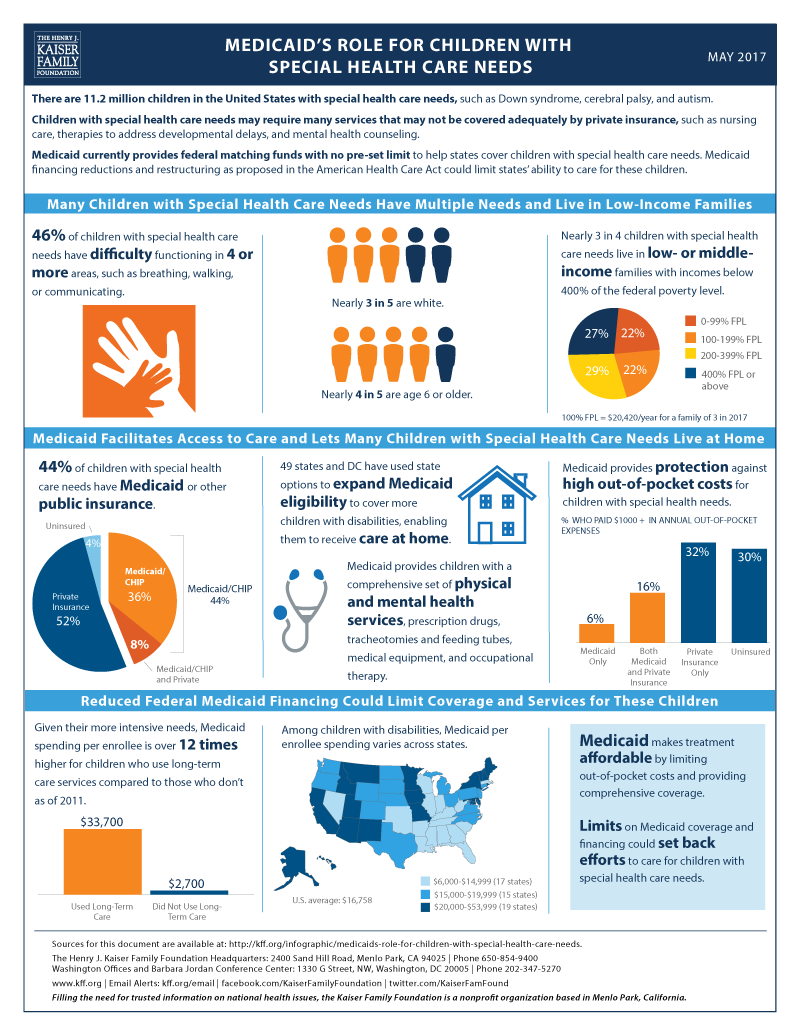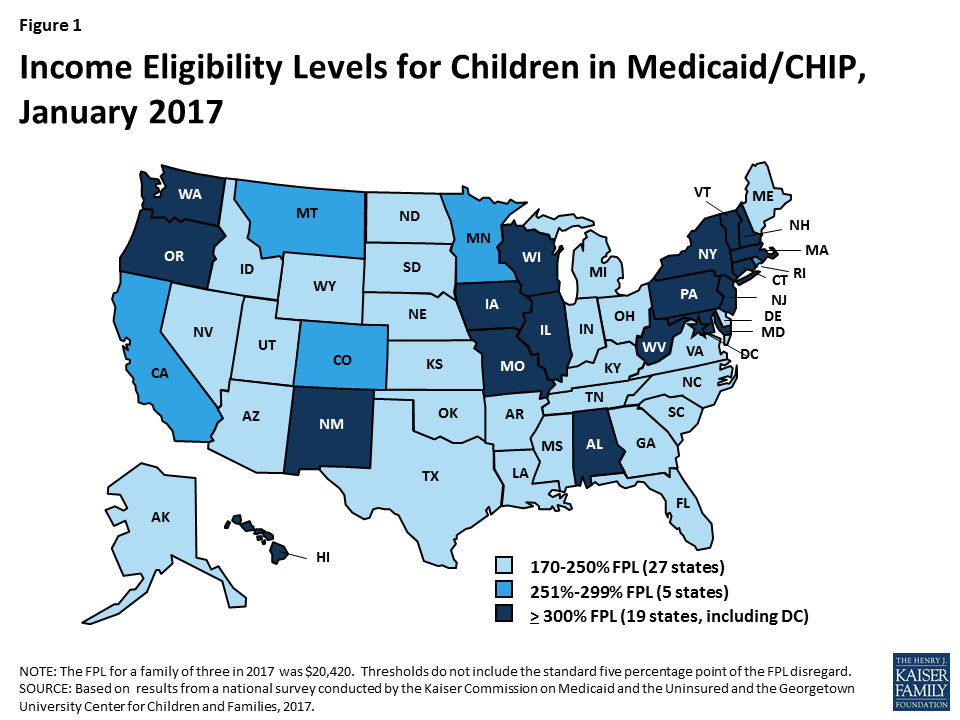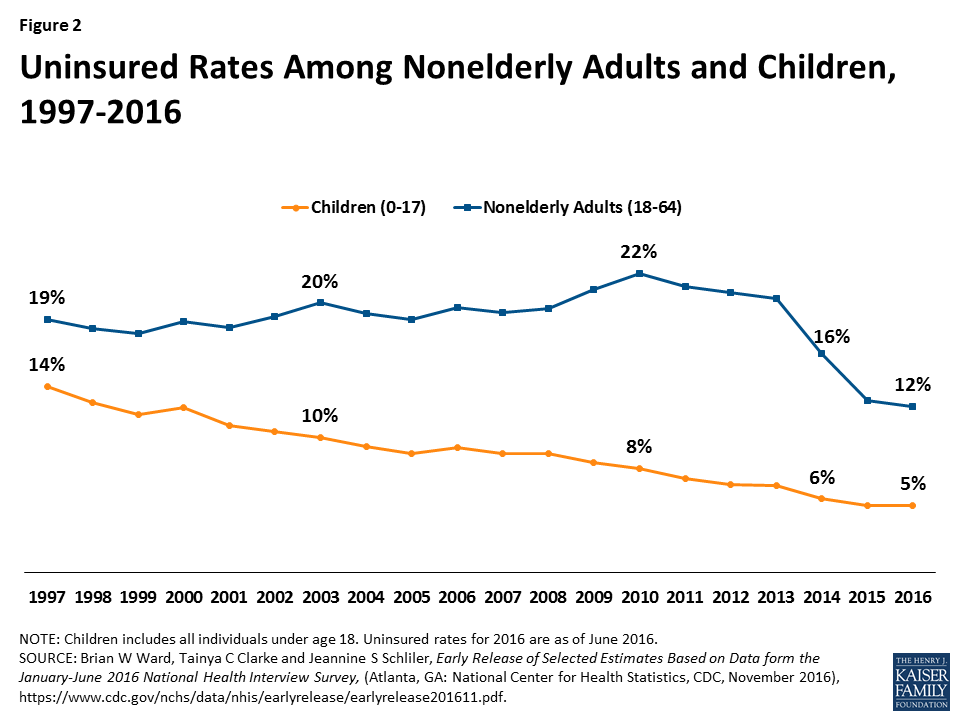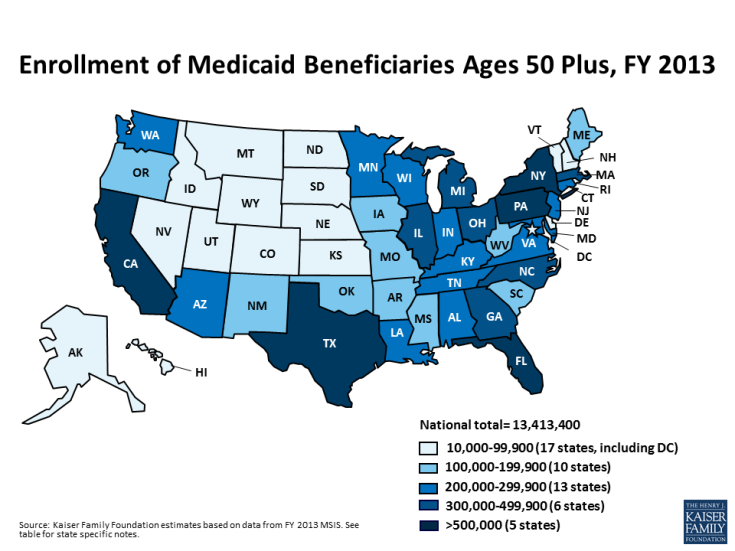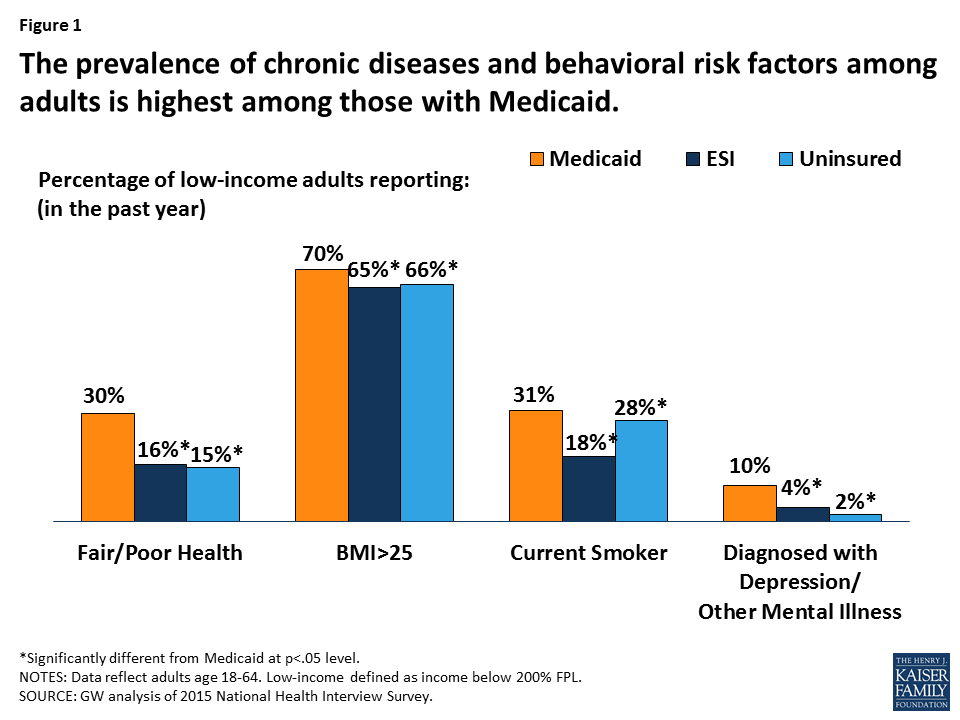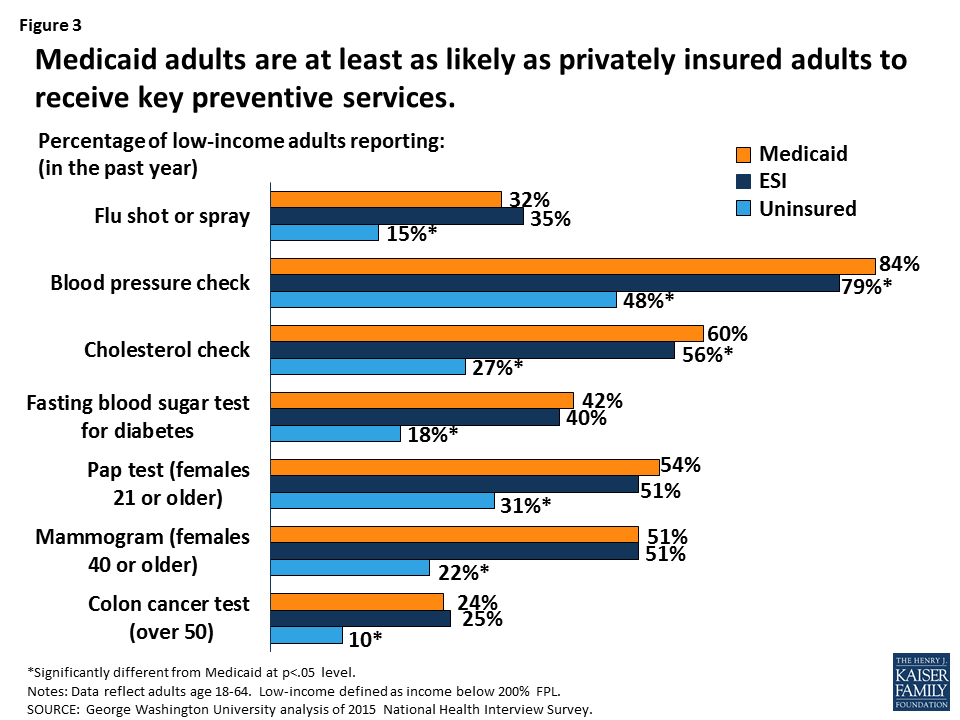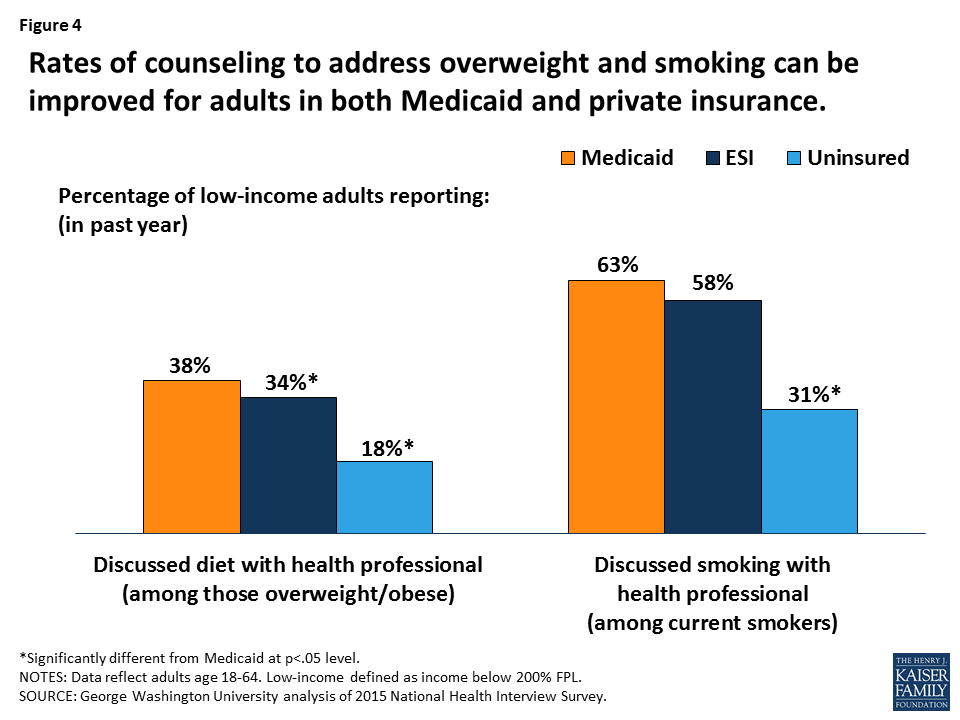Comparison of Medicare Provisions in Recent Bills and Proposals to Repeal and Replace the Affordable Care Act
Introduction
Repealing and replacing the Affordable Care Act (ACA) is a top priority of the Trump Administration and the Republican leadership, and is a prominent issue on the agenda of the 115th Congress. The ACA includes many provisions affecting the Medicare program, and lawmakers have taken different approaches to the ACA’s Medicare provisions. Some proposals would fully repeal the ACA, including all Medicare provisions. Other proposals, including the “American Health Care Act of 2017” (AHCA) as passed by the House of Representatives on May 4, 2017, would repeal some but not all Medicare provisions in the ACA.
This brief provides a side-by-side comparison of the Medicare-related provisions in seven bills and proposals that would repeal the ACA, excluding proposals that would not directly affect Medicare. Two of these proposals would repeal the ACA in its entirety, including all Medicare provisions. Three of the proposals, including the AHCA, would repeal some but not all Medicare provisions in the ACA, one proposal would retain all Medicare provisions in the ACA, and one does not specify. The first part of the side-by-side describes the Medicare provisions in the ACA that would be retained or repealed in each bill or proposal. The second part of the side-by-side describes the additional ways in which the bills and proposals would change Medicare, such as structural modifications to the Medicare program (e.g., premium support).
The bills and proposals in this comparison include:
- “American Health Care Act of 2017,” H.R. 1628, introduced on March 20, 2017 by Rep. Black (R-TN) as chairperson of the House Budget Committee and passed by the House on May 4, 2017.
- “American Health Care Reform Act of 2017,” H.R. 277, introduced by Rep. Roe (R-TN), on behalf of the Republican Study Committee, in January 2017.
- “A Better Way,” released by Speaker Ryan (R-WI) in June 2016.
- “World’s Greatest Healthcare Plan Act of 2016,” H.R. 5284 and S. 2985, introduced by Rep. Sessions (R-TX) and Sen. Cassidy (R-LA) in May 2016.
- “A Balanced Budget for a Stronger America,” FY2017 Budget Resolution, released by the House Budget Committee, chaired by former Rep. Price (R-GA) (now HHS Secretary), in March 2016.
- “Restoring Americans’ Healthcare Freedom Reconciliation Act of 2015,” H.R. 3762, introduced by former Rep. Price (R-GA) (now HHS Secretary), passed by the House and Senate, and vetoed by the President in February 2016.
- “Empowering Patients First Act of 2015,” H.R. 2300, introduced by former Rep. Price (R-GA) (now HHS Secretary) in May 2015.
Each of these bills and proposals make changes to the Medicare program that could have important implications for Medicare beneficiaries, the federal budget, health care providers, or private plans. This brief focuses on the key provisions in each of these bills and proposals that would directly affect Medicare, but is not a comprehensive summary of these bills and proposals.
Table
Comparison of Medicare Provisions in Recent Bills and Proposals to Repeal and Replace the Affordable Care Act (ACA)
| “American Health Care Act of 2017,” as passed by the House of Representatives on May 4, 2017 | Rep. Roe:”American Health Care Reform Act of 2017″ | Speaker Ryan:”A Better Way”(2016) | Rep. Sessions and Sen. Cassidy:”World’s Greatest Healthcare Plan Act of 2016″ | House Budget Committee:”A Balanced Budget for a Stronger America”(2016) | Rep. Price:”Restoring Americans’ Healthcare Freedom Reconciliation Act of 2015″ | Rep. Price:”Empowering Patients First Act of 2015″ | |
| Bill Number | H.R. 1628 | H.R. 277 | Not applicable | H.R. 5284 / S. 2985 | Not applicable | H.R. 3762 | H.R. 2300 |
| Medicare-Related Provisions in the ACA | |||||||
| General treatment of Medicare provisions in the ACA | Would repeal some ACA Medicare provisions. | Would repeal all ACA Medicare provisions. | Would repeal some ACA Medicare provisions. | No change to ACA Medicare provisions. | Would repeal all of “Obamacare”; unspecified whether Medicare provisions would be repealed. | Would repeal some ACA Medicare provisions. | Would repeal all ACA Medicare provisions. |
| Reductions in Medicare Payments to Providers and Plans in the ACA | |||||||
| Hospitals and other health care providers: Reduced payments to providers by lowering market basket updates and productivity adjustments and other changes | No change. | Would repeal. | Would repeal the changes to the hospital wage index system. No other changes specified. | No change. | Unspecified. | No change. | Would repeal. |
| Disproportionate Share Hospital (DSH) payments: Reduced DSH payments to hospitals for uncompensated care | Would repeal DSH cuts for FY2020 – FY2025; non-expansion states exempt from DSH cuts for FY2018 – FY2019. | Would repeal. | Would repeal the FY2018 & FY2019 cuts in Medicare DSH, and create a national pool of uncompensated care funds for DSH hospitals beginning in FY2021. | No change. | Unspecified. | No change. | Would repeal. |
| Medicare Advantage: Reduced federal payments to plans and other provisions | No change. | Would repeal. | Would retain ACA reductions in payments to plans.Would repeal the benchmark cap that prevents some plans from receiving full bonus amounts.Would freeze the HHS Secretary’s authority to adjust plan payments for “coding intensity.” | No change. | Unspecified. | No change. | Would repeal. |
| Other Medicare-Related Provisions in the ACA | |||||||
| Delivery system reforms: Established “Innovation Center” (CMMI), new patient care and payment models (such as ACOs), and penalties for hospital readmissions and hospital-acquired conditions | No change. | Would repeal. | Would repeal CMMI, beginning in 2020. | No change. | Unspecified. | No change. | Would repeal. |
| Independent Payment Advisory Board (IPAB): Authorized creation of the Board | No change. | Would repeal. | Would repeal. | No change. | Would repeal. | No change. | Would repeal. |
| Physician-owned hospitals: Established a moratorium on physician-owned hospitals | No change. | Would repeal. | Would repeal. | No change. | Unspecified. | No change. | Would repeal. |
| Part D: Closed the coverage gap (by 2020) | No change. | Would repeal. | No change. | No change. | Unspecified. | No change. | Would repeal. |
| Preventive benefits: Eliminates cost-sharing for most preventive services | No change. | Would repeal. | Unspecified; would charge 20% cost-sharing for all covered services under a restructured benefit redesign (see entry below). | No change. | Unspecified. | No change. | Would repeal. |
| Medicare Premiums and Related Revenue Provisions in the ACA | |||||||
| Income-related premiums: Added income-related Part D premiums and modified income-related Part B premiums | No change. | Would repeal. | No change. | No change. | Unspecified whether provision would be repealed as part of full “Obamacare” repeal.Would require seniors with annual incomes over $1 million to fully cover cost of Part B & D premiums. | No change. | Would repeal. |
| Fee on manufacturers and importers of branded prescription drugs: Imposed new fee | Would repeal, beginning after December 31, 2016. | Would repeal. | Would repeal. | No change. | Unspecified. | Would repeal. | Would repeal. |
| Fees on health insurers: Imposed new fees on insurers, including Medicare Advantage and Part D plans | Would repeal. | Would repeal. | Would repeal. | No change. | Unspecified. | Would repeal. | Would repeal. |
| Part A payroll tax: Imposed Part A payroll tax increase on high-earners | Would repeal, beginning after December 31, 2022. | Would repeal. | Would repeal. | No change. | Unspecified. | Would repeal. | Would repeal. |
| Tax deduction for retiree drug subsidy: Eliminated employer tax deduction of retiree drug subsidy amount | Would repeal, beginning after December 31, 2016. | Would repeal. | Would repeal. | No change. | Unspecified. | Would repeal. | Would repeal. |
| Non-ACA Medicare-Related Provisions | |||||||
| Structural Changes to Medicare | |||||||
| Premium support: Transform Medicare into a premium support system | Not included. | Not included. | Would implement a premium support system that would include traditional Medicare and private plans for new beneficiaries beginning in 2024, with support payments adjusted for health status and income; no plan could deny coverage to a beneficiary.Would require MedPAC to develop a prototype competitive bidding system by June 2021 that would adjust beneficiaries’ support payments for plans’ historical bids and performance on quality measures. | Not included. | Would implement a premium support system that would include traditional Medicare and private plans for new beneficiaries, beginning in 2024. Plans would be required to provide the same benefits and services of traditional Medicare, and no plan could deny coverage to a beneficiary. | Not included. | Not included. |
| Redesign Parts A and B benefits: Change Medicare’s benefits and cost-sharing | Not included. | Not included | Would combine Parts A & B with a single deductible, 20% cost-sharing on all covered services, and annual limit on out-of-pocket expenses, beginning in FY2020. | Not included | Would combine Parts A & B with a single deductible and annual limit on out-of-pocket expenses, beginning in 2024. | Not included | Not included |
| Raise the age of Medicare eligibility | Not included. | Not included. | Would increase the age of Medicare eligibility (65) to correspond with that of Social Security (67), beginning in FY2020. | Not included. | Not included. | Not included. | Not included. |
| Medigap and other supplemental coverage: Limit supplemental coverage | Not included. | Not included | Would restrict Medigap plans from providing first-dollar coverage, beginning in FY2020. | Not included. | Would reform supplemental insurance; details not specified. | Not included. | Not included. |
| Changes Pertaining to Low-Income Beneficiaries (People Dually Eligible for Medicare and Medicaid) | |||||||
| Medicaid block grant for dual eligibles and other Medicaid beneficiaries | Would provide a per capita allotment beginning in FY2020. Would provide states the choice between a per capita allotment or a block grant for Medicaid for certain populations for 10 fiscal years, beginning in FY2020 (block grant option not allowed for elderly or blind/disabled population). In 2021 and beyond, per capita amounts would increase by an inflationary factor, which would be medical CPI plus 1 percentage point for the elderly and blind-disabled groups, and medical CPI for other populations. | Not included. | Would provide states the choice between a per capita allotment or a block grant for Medicaid. States that selected block grants would be required to provide “required services” to dual eligibles. Per capita allotments would begin in 2019. | Would provide a per capita allotment for Medicaid. Would not exempt Medicaid-covered services provided to dual eligibles, such as nursing home care. Would exempt Medicaid cost-sharing for qualified Medicare beneficiaries (QMB) and Medicaid administrative costs for determining Part D Low-Income Subsidy eligibility. | Would implement “State Flexibility Funds”; details not specified. | Not included. | Not included. |
| Medicare Savings Programs (MSPs) | Not included. | Not included. | Would combine all MSPs into one program and require states to use one (unspecified) asset test for beneficiary qualification, beginning in FY2020. | Not included. | Not included. | Not included. | Not included. |
| Changes to Provider Payments | |||||||
| Physician private contracting: Ease constraints on physicians to enter into contracts with beneficiaries | Not included. | Not included. | Would create a “personalized care demonstration” that would allow physicians to enter into private contracts with beneficiaries and provide items/services outside of Medicare. | Not included. | Not included. | Not included. | Would allow physicians to enter into contracts with beneficiaries on a patient-by-patient basis and charge prices that are different from Medicare’s physician fee schedule. States would be prohibited from limiting the amount a physician could charge. Would allow patients to seek some reimbursement from Medicare for services received under private contract. |
| Physician self-referrals | Not included. | Not included. | Not included. | Would allow HHS Secretary to waive the ban on physician self-referrals if the Secretary determines it would increase competition, reduce costs, and increase the quality of health care. | Not included. | Not included. | Not included. |
| Out-of-network emergency care | Not included. | Not included. | Not included. | Would limit the amount that could be charged to patients, including Medicare beneficiaries, for out-of-network emergency care. | Not included. | Not included. | Not included. |
| Other Provisions | |||||||
| Health Savings Accounts (HSAs) for Medicare beneficiaries | Would allow persons over age 55 to make catch-up contribution of up to $1,000. | Would allow beneficiaries 65 and older who are only enrolled in Part A to enroll in an HSA. | Not included. | Not included. | Not included. | Not included. | Would allow beneficiaries 65 and older who are only enrolled in Part A to enroll in an HSA. |
| Medicare Advantage Medical Savings Accounts (MSAs) | Not included. | Would allow beneficiaries enrolled in Medicare Advantage MSAs to contribute their own money to the MSA. | Not included. | Not included. | Not included. | Not included. | Would allow beneficiaries enrolled in Medicare Advantage MSAs to contribute their own money to the MSA. |
| Medicare Advantage quality relative to traditional Medicare | Not included. | Not included. | Would require HHS Secretary to report on Medicare Compare the performance of Medicare Advantage and traditional Medicare for each MSA on a core set of quality measures, beginning in CY2020. | Not included. | Not included. | Not included. | Not included. |
| Medicare claims data: Make data more available and transparent | Not included. | Would require HHS Secretary to make Medicare claims data public in a searchable database beginning in FY2016. | States support for “sharing and analyzing health data”; unspecified whether the statement includes Medicare claims data. | Not included. | Not included. | Not included. | Not included. |
| Budget Instructions and/or Impact | |||||||
| Budget instructions and/or impact as stated in the bill or proposal | CBO/JCT estimate: insurance-covered provisions (mostly from changes in DSH payments) would increase Medicare net spending by $43 billion from 2017 through 2026. This estimate does not include changes to Medicare spending and revenue due to other provisions. | Budgetary effects would not be entered on PAYGO scorecards.Offsets include lowering the discretionary spending limits (in the BBEDC) for FY2018 though 2021. | Not available. | Not available. | Would reduce Medicare spending by $449 billion from FY2017 through 2026, according to the proposal. | Would transfer $379.3 billion to the Federal Hospital Insurance (Part A) Trust Fund, which, according to the bill, represents the amount of on-budget Medicare savings in the bill for FY2016 through 2025. | Not available. |
| NOTES:Additional Acronyms: PAYGO (pay-as-you-go); BBEDC (Balanced Budget and Emergency Deficit Control Act of 1985)Income-related premiums: Income-related, higher premiums apply for incomes over $85,000/year (single) or $170,000/year (couple).”High-earners” (“Part A payroll tax” row) refers to individuals with incomes over $200,000/year (single) or $250,000 (couple).SOURCES:H.R. 1628, 115th Congress (2017-2018), “American Health Care Act of 2017,” introduced March 2017Republican Study Committee, H.R. 277, 115th Congress (2016-2017), “The American Health Care Reform Act,” January 2017A Better Way: Our Vision for a Confident America, Health Care section, June 2016, http://abetterway.speaker.gov/_assets/pdf/ABetterWay-HealthCare-PolicyPaper.pdfH.R. 5284, 114th Congress (2015-2016), “World’s Greatest Healthcare Plan Act of 2016,” May 2016FY2017 Budget Resolution: A Balanced Budget for a Stronger America, March 2016, http://budget.house.gov/uploadedfiles/fy2017_a_balanced_budget_for_a_stronger_america.pdfH.R. 3762, 114th Congress (2015-2016), “To provide for reconciliation pursuant to section 2002 of the concurrent resolution on the budget for fiscal year 2016,” January 2016H.R. 2300, 114th Congress (2015-2016), “Empowering Patients First Act,” May 2015, http://tomprice.house.gov/sites/tomprice.house.gov/files/HR%202300%20Empowering%20Patients%20First%20Act%202015.pdfCongressional Budget Office (CBO) score of H.R. 3762 as of January 4, 2016 available at: https://www.cbo.gov/publication/51107. | |||||||
